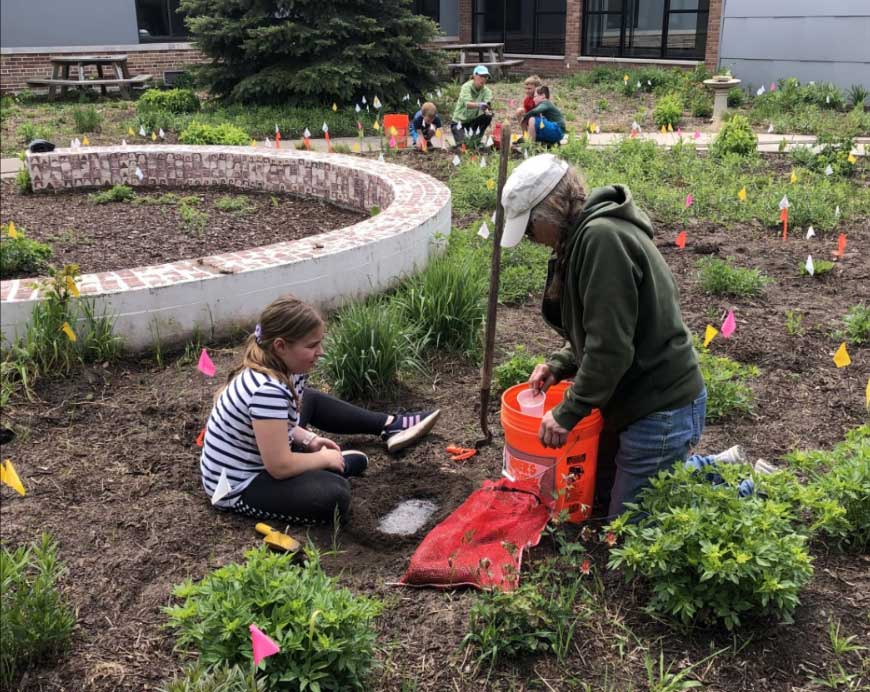Submitted by Erica Johnson, West Michigan Great Lakes Stewardship Initiative
Students at Ealy Elementary in Whitehall, MI, learned about service learning through their classroom teachers and community partner, Connie Crancer, a former native plants specialist at the Matthaei Botanical Gardens and Nichols Arboretum at the University of Michigan. Using the school courtyard garden is a launching point for initiating the project, Connie, the teachers and students learned scientific best practices in making observations and collecting data for their environmental stewardship project by monitoring the insects and plants that live in the courtyard garden. The students also learned how to harvest seeds from their courtyard garden and germinate the seeds in the classroom using a germination chamber. By springtime, the students had young native plants that they took home to plant in the community as well as plant in their schools courtyard garden. The students also helped maintain the courtyard garden by removing invasive plant species.


I’m really impressed by the fact that students used the school’s garden as a library of sorts and gathered native seeds to plant in their own communities. This would be a dream for a school like ours that is still trying to get native plants planted and thriving!
Wow! I love this project. The hands-on aspects of this project are amazing. And the skills that they learn through it are extremely valuable. Something they will remember forever.
How awesome – the garden was both a library and a lab! School gardens can be a challenge to maintain, especially when just used for one particular unit / part of the year — I really love the sustained and multidisciplinary ways in which the students were engaged in this project.
This gives inspiration to our goals of creating more rain gardens at local schools. I wonder if some of the native plants were of benefit to pollinators as well, which could lead to so many other learning opportunities!